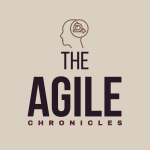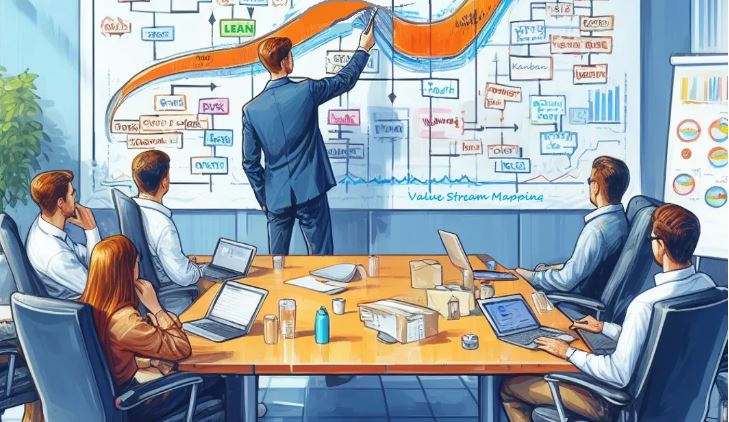Is Your Agile Stuck in a Sprint pothole? Try Flow-Based Work Instead!
 Agile development has long relied on timeboxed sprints for iterative delivery, providing structure and focus for teams delivering value in manageable chunks. However, for complex projects characterized by uncertainty, evolving requirements, and unpredictable dependencies, the rigid structure of sprints can start to feel like a straitjacket, hampering creativity, adaptability and agility.
Agile development has long relied on timeboxed sprints for iterative delivery, providing structure and focus for teams delivering value in manageable chunks. However, for complex projects characterized by uncertainty, evolving requirements, and unpredictable dependencies, the rigid structure of sprints can start to feel like a straitjacket, hampering creativity, adaptability and agility.
To navigate this, organizations have increasingly been embracing flow-based work which is a shift from time-boxed sprints to a continuous delivery mindset. This post will discuss the drawbacks of sprint-based delivery, look at possible substitute models like value stream mapping and Kanban, and provide helpful advice on how to switch to a more flexible workflow.
Limitations of Sprints in a complex world
If you’re an Agile practitioner, you’ve probably seen that teams are locked into predetermined deliverables during sprints, particularly if they go longer than two weeks. Because of this, it is challenging to adjust to shifting priorities and customer expectations. Imagine devoting three to four weeks to developing a feature that is rendered obsolete before the sprint even ends. In addition, time-boxed sprints frequently lead to unjustified pressure to “meet the deadline” and cram in features to match the “team capacity†regardless of the real value provided. This can lead to hasty decisions thus compromising on quality.
When priorities are frequently changed during sprints, delivery plans are severely disrupted owing to rework and missed deadlines. Furthermore, sprint targets might occasionally obscure the bigger picture, limiting cross-team collaboration and value stream optimization.
Fortunately, there are alternative approaches that embrace the fluidity of complex work. Two popular lean models, that have been around, are Kanban and Value Stream Mapping.
- Kanban is a pull-based system that visualizes workflow on a board, emphasizing continuous improvement and prioritizing immediate delivery of the highest-value items. Imagine a visual board where tasks flow through different stages, with teams continuously pulling work and delivering value as soon as possible. Meeting deadlines is not the main goal of Kanban; rather, the emphasis is on streamlining the work process. The teams focus on “pulling” work from a backlog based on capacity, nurturing adaptability and responsiveness.
- Value Stream Mapping is a lean technique that maps the complete process from idea to delivery, exposing bottlenecks and improving work flow by removing the bottlenecks that impede flow. It helps you find and remove waste in your development process. Teams may eliminate conventional “sprint” limits and instead prioritize work that offers the most value by knowing the whole value stream. If you didn’t know already, a value stream is the set of all steps (both those that add value and those that don’t) that are required to bring a product or service to a customer.
Take the example of GE Digital. Their Digital Grid unit have been driving real results for the company using lean principles, like value stream mapping (identifying and streamlining every step) and pull (producing only what customers demand). Their teams used value stream mapping to uncover and eliminate waste in their processes. They were able to slash inventory, shorten production cycles, and minimize travel time. These seemingly small changes unlocked a 30% increase in contribution margin from 2019 to 2020. By focusing on value and customer needs, the team boosted labor productivity and morale. Lean was a cultural shift that empowered GE Digital’s employees, and streamlined their operations.
Where do flow-based techniques work well?
While there is no one-size-fits-all solution, flow-based techniques work especially well for:
- Maintenance Projects, where prioritization and rapid response to changing requirements are crucial.
- Product Development, where continuous delivery, and close customer interaction and iteration are key to keeping up with the market and customer needs.
- Projects with Uncertain Outcomes, where evolving needs and priorities demand adaptability beyond fixed sprint cycles. The team should focus on delivering value incrementally, showing flexibility and adaptation.
🧳 Transitioning to Flow: Some Practical Tips
Making the switch to a flow-based methodology is not as simple as it seems. Here are some pointers:
- Start Small:Â Don’t try to overhaul everything at once. Begin by experimenting with flow-based practices on smaller projects or specific workstreams. It would be crucial to train your team on the principles and practices of flow-based work to ensure successful adoption.
- Shift Mindset:Â Embrace continuous delivery and keep your project planning flexible and responsive.
- Focus on Value: Prioritize work based on its impact on customer outcomes, not just sprint goals. Shift the mindset from meeting deadlines to delivering value as quickly and efficiently as possible.
- Visualize Workflow:Â Implement Kanban boards or similar tools to create transparency and facilitate collaboration.
- Optimize Flow with Continuous Improvement:Â Apply value stream mapping techniques to continually identify and eliminate bottlenecks in your process based on data and feedback.
One thing to keep in mind is that flow-based work is about selecting the appropriate tool for the task, not about doing away with sprints completely (for instance, the Spotify Model gives the flexibility to use Scrum, Kanban or Scrumban).
For complex projects, adopting flow-based work represents a major improvement in responsiveness and agility. Organizations can flourish in the constantly changing software market, delight consumers, and handle uncertainty by prioritizing value, streamlining workflow, and encouraging a continuous delivery culture.





